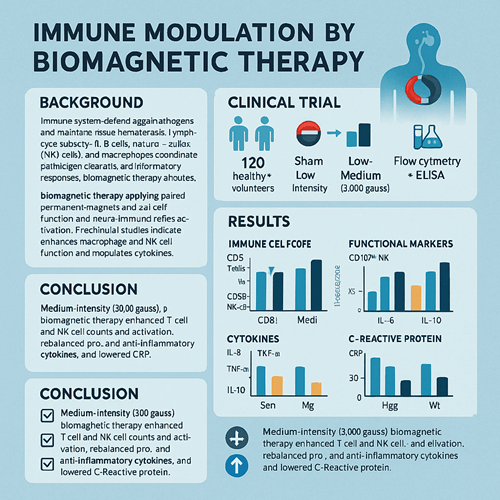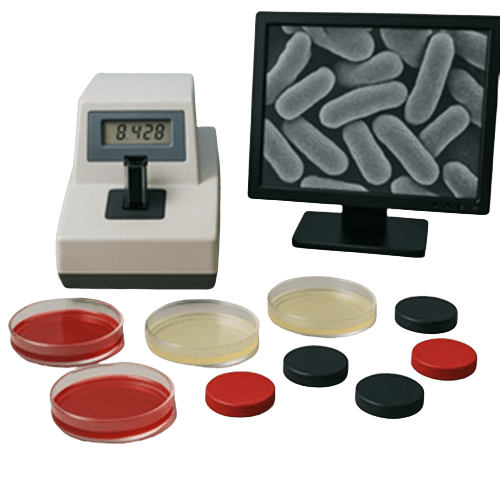This guide helps you understand the characteristics and ideal use-cases of magnets in therapy—so you can select the magnet that best fits your needs.
1. Why Size and Strength Both Matter
- Size (volume/contact area) determines the coverage area, comfort of placement, and precision of targeting.
- Strength (magnetic flux density, in Gauss) controls the penetration depth and effectiveness on deeper tissues.
Balancing these two factors ensures you target the right area without sacrificing comfort or ease of use.
2. Recommended Magnets by Application
| Application Scenario | Recommended Size (diameter/edge × thickness) | Strength Range | Material Suggestion | Notes |
|---|---|---|---|---|
| Local Pain Points | Φ10–20 mm × 3–5 mm | 1,500–3,000 Gs | Neodymium (NdFeB) | Small and precise for acupuncture points |
| Joints & Muscles | Φ25–40 mm × 5–8 mm or 30×30 mm × 5 mm | 2,000–4,000 Gs | Neodymium (NdFeB) | Wider coverage for knees, shoulders, wrists |
| Large Areas/Core Zones | Φ50–80 mm × 8–12 mm | 3,000–5,000 Gs | Neodymium (NdFeB) | Chest, mid-back; broad coverage |
| Sensitive Users | Φ15–25 mm × 2–4 mm | 800–1,500 Gs | Ferrite | Gentle field for children and seniors |
| Magnetic Wearables | Band width 30–50 mm, inserts Φ20–30 mm | 1,500–3,500 Gs | NdFeB + Leather/Fabric | Adjustable positioning, joint support |
Note: The sizes and strengths above are guidelines—adjust them slightly based on body contours and personal comfort.
3. Material Characteristics
- Neodymium (NdFeB)
- Pros: Very high magnetic energy (up to 50 MGOe), compact yet powerful, ideal for deep-tissue work.
- Cons: More expensive, prone to corrosion (requires protective coating), strong fields demand cautious use.
2. Ferrite
- Pros: Low cost, heat- and corrosion-resistant, safer for sensitive individuals.
- Cons: Lower magnetic energy (~3–4 MGOe), weaker field, limited penetration.
3. Composite/Hybrid Designs
- Examples include NdFeB cores with soft-iron casings or ferrite-NdFeB laminates. These focus magnetic flux, boosting surface field intensity without increasing size.
4. Recommendations by Therapy Method
4.1 Acupoint Application
- Small magnets (Φ10–20 mm) @ 2,000–3,000 Gs: Precise placement on acupuncture points (e.g., LI4, ST36).
- Attachment: Use medical adhesive or silicone pads to keep magnets securely in place.
4.2 Joint & Muscle Therapy
- Medium magnets (Φ25–40 mm or 30×30 mm) @ 2,000–4,000 Gs: Cover larger joint or muscle areas.
- Stabilization: Pair with elastic bands or magnetic braces for consistent contact.
4.3 Large-Area or Core Placement
- Large magnets (Φ50–80 mm) @ 3,000–5,000 Gs: Ideal for chest, spine, or abdomen.
- Duration: Limit sessions to 30–60 minutes to avoid discomfort from prolonged strong fields.
4.4 Wearable Devices
- Magnetic wristbands, knee braces, belts: Integrated magnets within leather or fabric deliver continuous low-to-mid strength fields (1,500–3,500 Gs).
- Use case: Ongoing support for occupational stress or chronic conditions.
5. Purchasing & Safety Tips
- Check Polarity
- Many protocols use only the north pole against the skin; keep the south pole facing away. Test with a compass or polarity card if you’re unsure.
2. Start Low and Short
- Beginners should begin with lower strength and short sessions (10–15 minutes), then gradually increase.
- Avoid continuous applications over 2 hours on one site to prevent dizziness or skin irritation.
3. Skin & Environment
- Ensure the skin is clean and dry before application.
- Do not place magnets near pacemakers, metallic implants, or directly over pregnant abdomens.
4. Storage & Care
- Store magnets separately to prevent them from snapping together.
- Keep NdFeB magnets dry and away from high heat; inspect coatings regularly for damage.
6. Conclusion
Selecting the right therapeutic magnet involves matching:
- Application scenario (local point, joint, broad area)
- Size (surface area and body fit)
- Strength (desired penetration and effect)
- Material (performance, cost, and safety)
Use this guide to narrow down your choices. If uncertain, start with a small, low-strength magnet and adjust as you gauge comfort and efficacy—or consult a certified biomagnetic practitioner for personalized advice. Here’s to safe, targeted, and effective magnet therapy!



